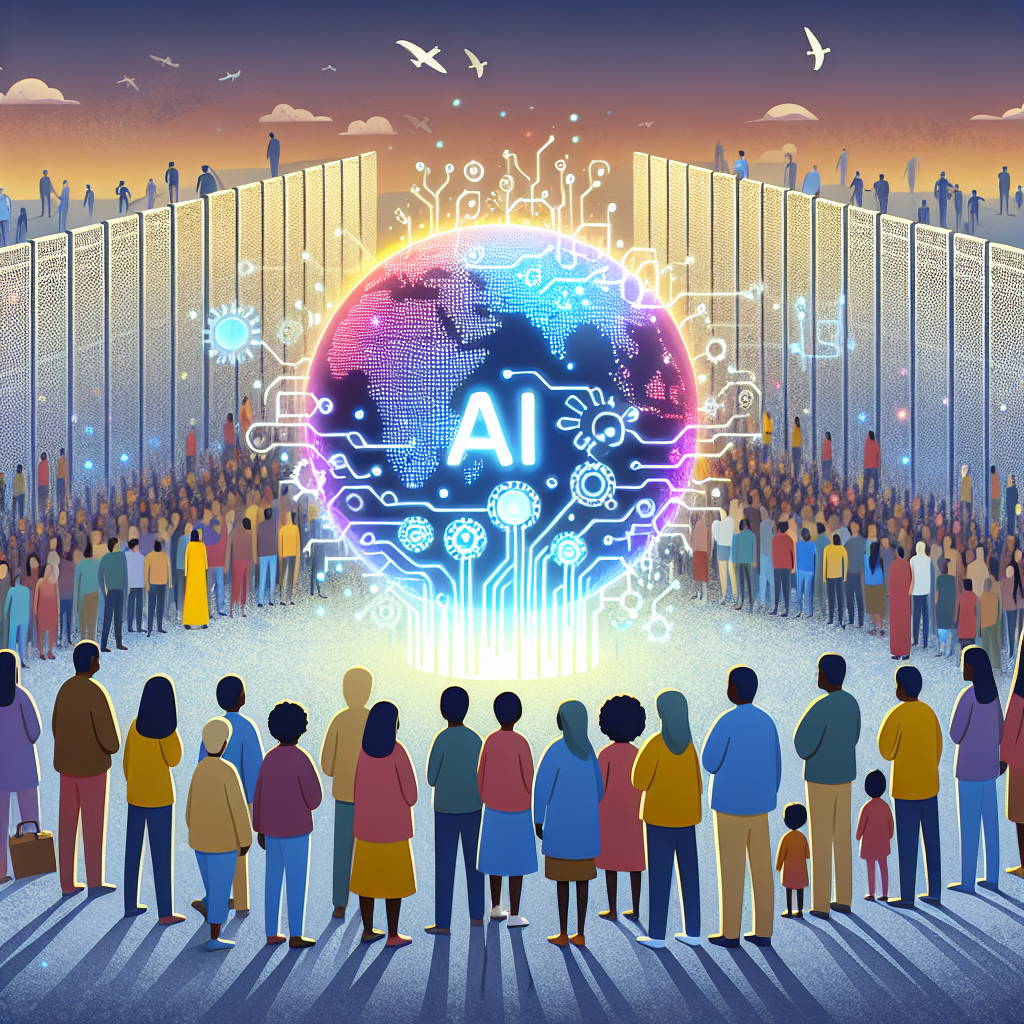In recent years, artificial intelligence (AI) has become increasingly prevalent in our daily lives. From virtual assistants like Siri and Alexa to recommendation algorithms on streaming services like Netflix, AI is revolutionizing the way we interact with technology. However, despite the many benefits AI can offer, there are still barriers to accessing this technology for all individuals. In this article, we will explore the concept of “AI for All” and discuss how we can break down barriers to access for everyone.
What is AI for All?
AI for All is a concept that aims to ensure that the benefits of artificial intelligence are accessible to everyone, regardless of their background or circumstances. This means making sure that AI technologies are inclusive and do not discriminate against certain groups of people. It also means providing opportunities for individuals from all walks of life to learn about and engage with AI in meaningful ways.
One of the key principles of AI for All is ensuring that the development and deployment of AI technologies are done in a responsible and ethical manner. This includes ensuring that AI systems are transparent, accountable, and fair. It also means addressing biases and ensuring that AI technologies do not perpetuate or exacerbate existing inequalities.
Breaking Down Barriers to Access
There are several barriers that can prevent individuals from accessing AI technologies. These barriers can be economic, social, or cultural in nature. For example, individuals from low-income backgrounds may not have access to the latest technology or may not be able to afford AI-enabled devices. Similarly, individuals from marginalized communities may face discrimination or bias when using AI technologies.
One way to break down barriers to access is by providing opportunities for individuals to learn about and engage with AI in meaningful ways. This can involve offering training programs, workshops, and other educational resources that teach individuals how to use AI technologies. It can also involve creating spaces where individuals can collaborate and share ideas about AI.
Another way to break down barriers to access is by promoting diversity and inclusion in the development of AI technologies. This means ensuring that the teams responsible for creating AI systems are diverse and representative of the populations they serve. It also means involving community members in the design and development of AI technologies to ensure that they meet the needs of all individuals.
Finally, breaking down barriers to access also involves addressing issues of bias and discrimination in AI technologies. This means ensuring that AI systems are designed and implemented in a way that is fair and equitable for all individuals. It also means actively working to identify and address biases in AI systems to ensure that they do not perpetuate or exacerbate existing inequalities.
FAQs:
Q: What are some examples of AI technologies that are accessible to all individuals?
A: There are many AI technologies that are accessible to all individuals, such as virtual assistants like Siri and Alexa, recommendation algorithms on streaming services like Netflix, and chatbots on websites.
Q: How can individuals from low-income backgrounds access AI technologies?
A: Individuals from low-income backgrounds can access AI technologies through community centers, libraries, and other public spaces that offer free or low-cost access to technology. They can also take advantage of online resources and educational programs that teach them how to use AI technologies.
Q: How can we ensure that AI technologies are inclusive and do not discriminate against certain groups of people?
A: We can ensure that AI technologies are inclusive by promoting diversity and inclusion in the development of AI systems. This means ensuring that the teams responsible for creating AI technologies are diverse and representative of the populations they serve. It also means involving community members in the design and development of AI technologies to ensure that they meet the needs of all individuals.
Q: What are some ways to address bias and discrimination in AI technologies?
A: Some ways to address bias and discrimination in AI technologies include conducting bias audits, diversifying the teams responsible for creating AI systems, and involving community members in the design and development of AI technologies. It also involves actively working to identify and address biases in AI systems to ensure that they do not perpetuate or exacerbate existing inequalities.
In conclusion, AI for All is an important concept that aims to ensure that the benefits of artificial intelligence are accessible to everyone. By breaking down barriers to access, promoting diversity and inclusion, and addressing issues of bias and discrimination, we can create a more equitable and inclusive future for all individuals.

